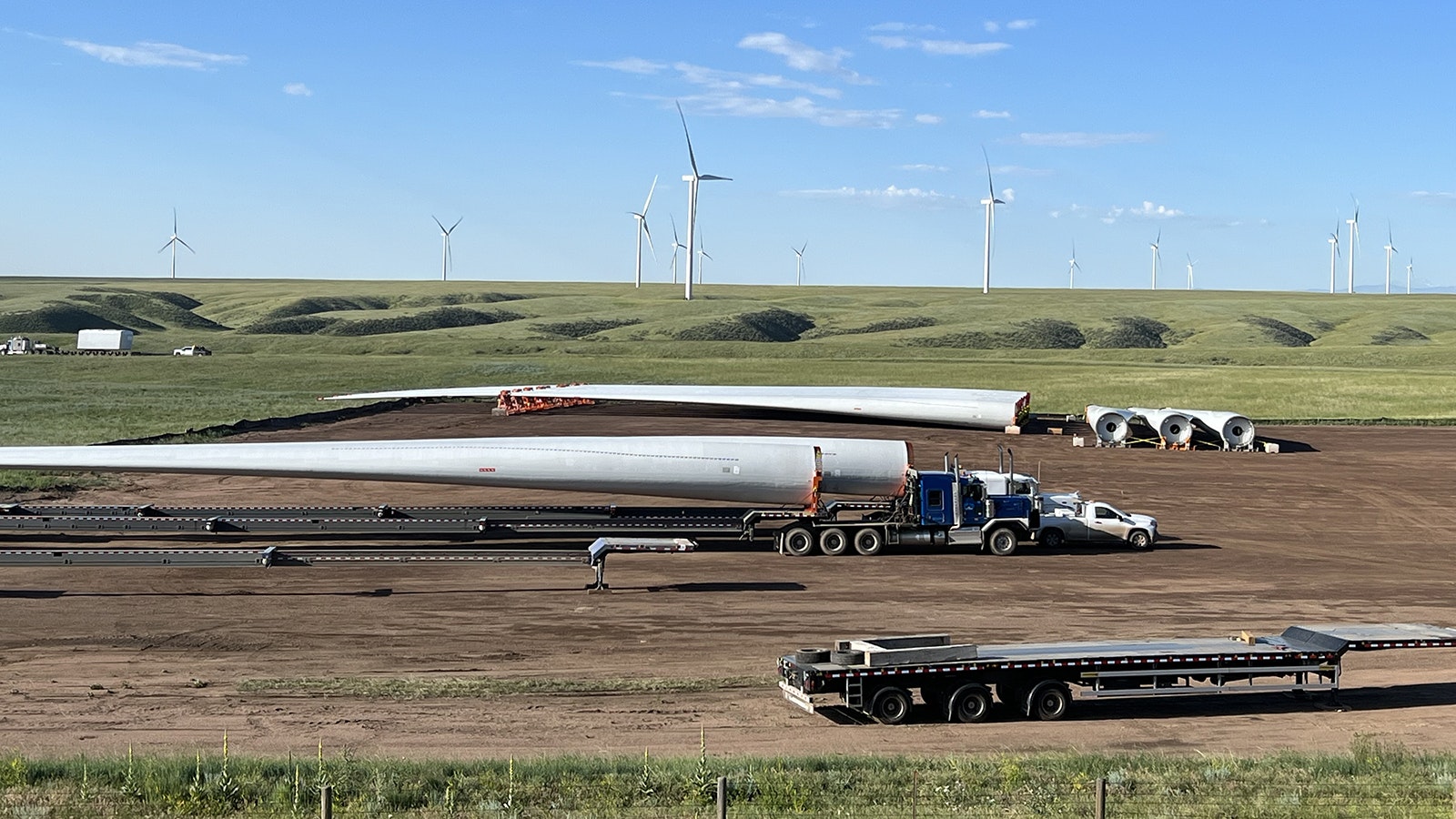Developers of wind and solar projects in Wyoming are about to get a jolt of economic benefits from a new federal rule issued Thursday.
Meanwhile, mining, oil and gas interests are having a difficult time digesting the clean-power agenda outlined in a new renewable energy rule that they say creates an uneven playing field.
On Thursday, the Biden administration announced an updated regulation to incentivize and expedite wind and solar energy development on “identified priority areas” located on public lands.
The new regulation is designed to help the administration achieve its goal of creating a pollution-free power sector by 2035.
In announcing the change, U.S. Secretary of the Interior Deb Haaland said that the administration is well ahead of its clean power goals, having permitted more than 25 gigawatts of alternative energy projects.
Wyoming Project
Of 45 renewable energy projects that have been approved since January 2021 on public land managed by the U.S. Bureau of Land Management, one is located in Wyoming, according to a BLM statement provided to Cowboy State Daily.
That project is the 590-megawatt Rock Creek wind project located about 25 miles north of Laramie between Rock River and Interstate 80. It straddles 37,000 acres in Albany County and 6,000 acres in Carbon County.
The project is sponsored by Chicago-based Invenergy Services LLC, which in recent years has attracted a $4 billion investment from Blackstone Inc., the world’s largest alternative asset investor.
The 25 gigawatts of renewable clean energy projects is enough to electrify more than 12 million homes and surpasses a milestone set originally for 2025.
As for Wyoming, the new regulation could incentivize clean power development on 18.4 million acres of BLM land.
That’s just under 8% of BLM’s total 245 million acres of land in a dozen Western states.
The rule has its cheerleaders.
“As the U.S. accelerates its transition to clean energy, it’s important to recognize that there are areas where it makes sense to incentivize the rapid and extensive development of renewable energy and areas where it doesn’t,” said Rachael Hamby, policy director for the Center for Western Priorities in Denver.
“In areas that have already been identified and prioritized as most suitable for renewable energy development, this will streamline the leasing process and help develop renewable energy capacity more quickly,” Hamby said.
Uneven Playing Field
Mining and oil and gas interests in Wyoming that extract energy from the BLM land aren’t happy with the uneven playing field.
“While utility operators continue to sound the alarm on the president’s hasty and foolish forced transition to unreliable energy sources, the Biden administration continues its blind march toward further destabilizing the American electric grid to appease its puppet masters in the radical environmental movement,” said Travis Deti, executive director for the Wyoming Mining Association.
“This latest in a long line of anti-fossil fuel measures picks winners and losers, throws out the concept of multiple use of federal lands, and will drive up energy costs on Americans while further eroding reliability and dispatchability,” he said. “The country is being sacrificed on the altar of the climate cult.”
The Petroleum Association of Wyoming (PAW) also finds the new renewable energy rule difficult to swallow.
In summary, PAW noted that the rule adjusts acreage rents and capacity fees for solar and wind energy projects, provides BLM staff with more flexibility when processing applications for solar and wind energy development inside designated leasing areas, updates agency criteria on prioritizing solar and wind applications, and makes various other technical changes and clarifications to BLM’s existing (rights of way) regulations.
These favorable changes contrast sharply with the substantial additional burdens contained in BLM’s proposed revisions to its federal oil and gas program, which would revise BLM’s oil and natural gas leasing regulations, explained Ryan McConnaughey, vice president of the Petroleum Association of Wyoming.
“The rule would alter basic principles of federal land management, create an unlevel playing field among energy sources on federal lands, and potentially restrict access for oil and natural gas development in some areas for decades to come,” he said.
Increasing Footprint In Wyoming
In recent years, Wyomingites have seen billions of dollars of wind and solar projects sprout up on the prairies and vast landscape of the Cowboy State — especially concentrated in the wind alleys of Albany, Carbon and Converse counties.
The updated regulation issued Thursday is called the “renewable energy rule,” which largely reduces rents and fees for BLM land by about 80% compared to those in place prior to guidance given just two years ago.
The rule implements part of the Energy Policy Act of 2020 that authorized BLM to reduce rents and fees for wind and solar development on public lands.
The renewable energy rule also allows the BLM to accept wind and solar lease applications in priority areas without holding a competitive auction if doing so is in the public interest.
According to WindExchange, more than 3,286 megawatts of wind-producing turbines have been built in the Cowboy State, everywhere from areas along Interstate 80 in southern Wyoming, to large fields near Douglas in Converse County off of the I-25 corridor.
Another 3,503 megawatts in wind power are in various stages of planning or construction.
Besides coal-fired power plants, which make up about 72.6% of the electric grid mix in Wyoming, wind makes up the next largest category at 22.4%, followed by 2.35% for natural gas, 2% for hydro and less than 1% for solar and oil, according to WindExchange.
Those percentages will dramatically shift in coming years as some coal-fired plants convert to gas, and some small nuclear plants begin to emerge in Wyoming.
Pat Maio can be reached at pat@cowboystatedaily.com.





